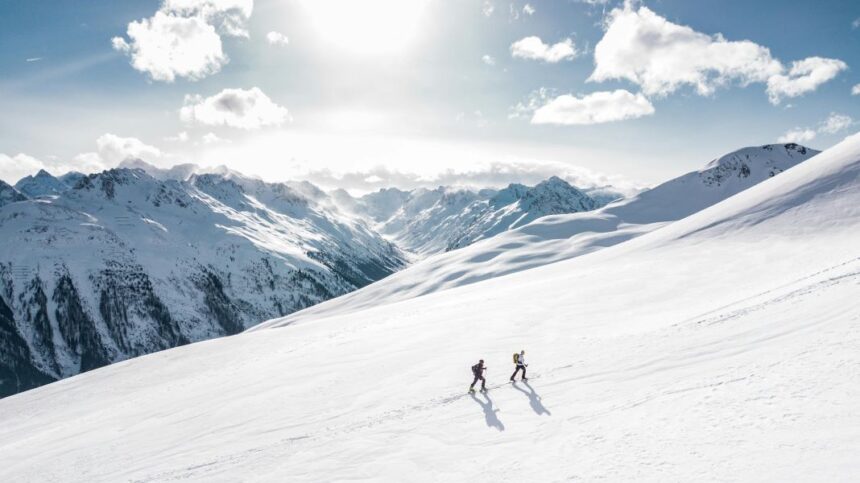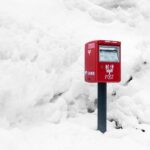Colorado’s climate can be beautifully diverse, from snow-capped peaks to sun-soaked plains. However, for residents and travelers alike, one pressing question remains: When will the weather cool down in Colorado? As summers grow warmer and stretches of hot weather extend longer than ever, many are eager to understand when they can expect relief.
The answer to this question varies depending on location, elevation, and climate patterns. Cities along the Front Range, like Denver or Colorado Springs, often cool down earlier than lower-elevation towns in the south or eastern plains. Likewise, the impact of climate change is shifting long-standing seasonal norms.
In this guide, we’ll examine the key factors influencing Colorado’s temperature drops. We’ll explore weather patterns by month, regional differences, and the role of wildfires and drought. Whether you’re planning a mountain escape, looking to schedule fall travel, or simply hoping for a break from the heat, this in-depth analysis will help you know when the weather will cool down in Colorado.
When will the weather cool down in Colorado?
Typically, temperatures begin to drop in mid- to late September in most of Colorado, but higher elevations cool off sooner, while lower areas stay warm well into October.
How Colorado’s Seasonal Shift Brings Relief From Summer Heat
Colorado summers are known for their intensity, and in recent years, they’ve become even hotter and longer due to climate change. Historically, most areas’ weather begins to cool by mid to late September. However, the timing varies significantly across the state. In higher elevation mountain towns like Aspen and Breckenridge, temperatures drop as early as late August. These areas benefit from thinner air and cooler overnight temperatures. On the other hand, lower elevation regions such as Pueblo and Grand Junction often hold onto summer heat into early October, especially during dry years.
The combination of continental and alpine climate zones makes Colorado’s weather patterns complex. July temperatures frequently hit 85–95°F in urban areas, although mountain regions tend to cool off faster after sunset. Forecasts suggest the summer of 2025 will continue the trend of above-average heat, especially in lower elevations. The arrival of cooler air often depends on seasonal monsoon patterns, which can bring moisture and cloud cover to help moderate temperatures in late summer.
Ultimately, when the weather will cool down in Colorado depends on geography, altitude, and annual climate trends. Most Coloradans can expect noticeable relief between mid-September and early October.
How Regional Elevation Affects Temperature Drops
Regional elevation plays a significant role in determining how and when temperatures begin to drop across Colorado. From alpine towns to lowland plains, the cooling timeline varies widely depending on altitude and geography.
Mountain Towns Cool Earlier
High-altitude towns such as Vail, Telluride, and Estes Park experience a much earlier shift to cooler weather than the rest of Colorado. The thinner air and alpine environment allow these areas to shed summer heat more rapidly, often beginning their seasonal cooldown in late August. Even during sunny days, temperatures drop sharply at night, signaling the approach of fall well before other parts of the state.
Front Range Patterns
The Front Range—including cities like Denver, Boulder, and Colorado Springs—typically begins to cool by mid to late September. However, these areas experience brief warm spells into early October, mainly when dry, sunny days linger. In particular, the urban heat island effect in Denver can delay overnight cooling.
Southern Colorado Trends
Southern towns such as Alamosa and Trinidad tend to stay warmer longer into the fall. Although nighttime temperatures start to dip by late September, daytime highs often remain mild well into October. These areas combine moderate elevation with southern latitude, which extends summer-like conditions.
Eastern Plains and Western Slope
In flatter regions like Sterling or Grand Junction, the weather tends to cool more gradually. These areas can remain unseasonably warm into early October. Without the elevation advantage, the transition from summer to fall is slower and less noticeable.
Microclimates and Local Variability
Microclimates shaped by rivers, valleys, and forested areas can create cooling differences even within a few miles. These localized effects complicate understanding when the weather will cool down in Colorado.
What Weather Patterns Signal the Shift to Fall in Colorado?
As the end of summer nears, Colorado begins to exhibit several natural and atmospheric signs that cooler weather is on the way. These weather patterns serve as reliable indicators of when the seasonal transition begins. If you’re wondering when will the weather cool down in Colorado, here are the most noticeable signals:
- Cooler Nights: One of the first signs of the changing season is the drop in overnight temperatures. In many areas, especially at higher elevations, nights begin to feel significantly cooler by late August—even if daytime highs remain warm.
- Shorter Days: As daylight hours decrease, Colorado experiences an earlier onset of evening cooling. The reduced sun exposure lowers average daily temperatures and begins to moderate the summer heat.
- Arrival of Dry Fronts and Wind Shifts: By late August or early September, cooler and drier air masses often arrive from the northwest, bringing noticeable relief from summer’s warmth. These air shifts help accelerate the seasonal cooldown.
- First Mountain Snowfalls: Higher elevations frequently receive their first dustings of snow by late September. While light at first, these early storms mark a definitive end to the summer season in the mountains.
- Changing Vegetation: Perhaps the most visible sign is the vibrant transformation of aspen leaves. Their golden hues appear in mid to late September, indicating that fall has arrived.
Why Climate Change Is Delaying Colorado’s Cooling Trend
Climate change is significantly altering Colorado’s seasonal weather patterns. Over the past decade, average summer temperatures in many areas have risen by 2 to 3 degrees Fahrenheit, resulting in longer, hotter summers. This warming trend delays the arrival of cooler temperatures, with some regions now experiencing summer-like heat well into October. The shift has serious consequences, including delayed mountain snowpack, extended wildfire seasons, and increased strain on the state’s water resources.
Urban areas like Denver are especially impacted by the urban heat island effect, where dense development and minimal green space trap heat, slowing overnight cooling. As a result, cities remain warmer for longer, intensifying discomfort and raising energy use. Climate scientists warn that unless emissions are reduced, these trends will continue, shrinking Colorado’s fall season and disrupting natural ecosystems. Accurately predicting when will the weather cool down in Colorado now requires analyzing both historical data and forward-looking climate models.
When Will the Weather Cool Down in Colorado—City by City Breakdown
Understanding when will the weather cool down in Colorado depends heavily on where you are. Different regions across the state experience seasonal changes at different times due to elevation, geography, and climate variations. Here’s a breakdown by city and region:
- Denver’s Cooling Timeline: The Mile High City typically begins to cool down in mid to late September. However, warm spells often stretch into early October, especially during dry years. The urban heat island effect also causes temperatures to linger slightly higher in the evenings.
- Colorado Springs Climate Shift: Located at a higher elevation than Denver, Colorado Springs usually sees a temperature drop earlier. Cooling begins in early to mid-September, with crisp nights arriving ahead of schedule.
- Boulder & Fort Collins Forecast: Both cities begin to transition into fall around mid-September. Due to their foothill proximity, they often enjoy cooler nighttime temps, even while daytime highs remain pleasant.
- Aspen, Vail & Mountain Areas: These high-elevation towns experience cooler weather as early as late August. By late September, the first frosts and occasional snowfalls mark the official start of their cooler season.
- Pueblo & Grand Junction Delays: In contrast, lower-elevation cities like Pueblo and Grand Junction hold onto summer heat well into October. Daytime highs remain warm, and proper cooling may not occur until mid-fall.
In Closing
So, when will the weather cool down in Colorado? The answer depends on several factors, including location, elevation, and shifting climate trends. Most regions begin to feel cooler temperatures by mid to late September, while mountain areas often experience relief as early as late August. In contrast, lower-elevation cities may hold onto summer warmth into October. Climate change continues to delay the seasonal transition, making each year’s timeline less predictable. For travelers and locals alike, staying informed about regional weather patterns is key. By planning and embracing seasonal changes, you can enjoy Colorado’s beautiful fall offers—from crisp mornings to golden aspen leaves and cooler, refreshing days.
FAQ’s
When does fall weather usually start in Colorado?
Most areas begin to see fall-like conditions by mid to late September, especially in higher elevations.
Why is it still hot in Colorado in October?
Climate change and lingering heat waves can extend summer temperatures into early October in many parts of the state.
Do the Colorado mountains cool down earlier than cities?
Yes, mountain towns like Aspen or Estes Park cool down weeks earlier due to higher elevation and lower air density.
What month does snow usually start in Colorado?
In the mountains, snow can fall as early as late September, but most cities see snowfall from late October to November.How do I plan for changing weather in Colorado?
Layer your clothing, follow local forecasts, and expect fast temperature changes, especially during the fall season.











